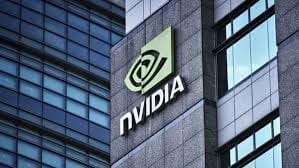NVIDIA (NVDA) has become one of the most talked-about stocks of the decade. From powering high-end gaming to leading the AI revolution, NVIDIA has redefined what a technology company can achieve. But with its stock price soaring and expectations sky-high, the big question remains: Is NVDA still a good investment in 2025? And if so, what’s the best strategy to invest?
Let’s break it down.

—
Current NVDA Stock Price Snapshot (As of July 2025)
Stock Price: ~$164 per share
52-week Range: ~$103 – $170
Market Cap: Over $4 trillion
PE Ratio (TTM): ~35–38
Dividend: Minimal or none — focus remains on growth
The stock has surged over the past year, riding the wave of AI demand, data center expansion, and chip innovation. NVIDIA’s leadership in GPU and AI hardware has kept it at the center of tech investing conversations.
—
Why NVDA Remains a Hot Pick in 2025
1. AI Growth Engine
NVIDIA’s chips are essential for AI model training, from chatbots to robotics. Its GPUs dominate the machine learning and data center market, making it the backbone of AI infrastructure.
2. Cloud & Data Center Expansion
Tech giants like Google, Microsoft, and Amazon all rely on NVIDIA for AI acceleration in their cloud platforms. With data consumption growing exponentially, demand for high-performance chips is unlikely to slow down.
3. New Product Lines: Blackwell Series
NVIDIA’s latest architecture, Blackwell, is driving anticipation for next-gen performance across both enterprise and gaming segments.
4. Global Expansion (Including China)
Despite geopolitical hurdles, NVIDIA has made strategic moves to comply with export regulations and maintain global reach — including newly tailored chips for the Chinese market.
—
Is NVDA Overvalued? A Fair Concern
Critics argue that NVIDIA’s stock price has run far ahead of its fundamentals. The valuation is definitely rich, and priced for perfection. So, what should an investor do?
—
Investment Strategy: How to Play NVDA in 2025
1. Core Long-Term Holding
Ideal for: Investors with a 3–5 year horizon
Why: Despite high valuation, NVIDIA has consistently outperformed expectations. If AI continues its growth trajectory, NVIDIA will likely remain the market leader.
> ✔ Strategy: Buy on dips. Don’t chase green candles — wait for 5–10% pullbacks to build your position gradually.
—
2. Swing Trading for Seasoned Investors
Ideal for: Traders who can monitor trends weekly
NVDA tends to move in cycles. After earnings or major product announcements, it often rallies, followed by short consolidation periods.
> ✔ Strategy: Use technical levels — support near $150–155, resistance at $170+. Time entries carefully.
—
️ 3. Hedge With Options
Ideal for: Investors worried about short-term volatility
Options can protect your gains or amplify returns with limited capital.
> ✔ Strategy: Use covered calls to earn passive income or buy protective puts if the stock becomes overextended.
—
4. Diversified Tech Portfolio
Ideal for: Risk-averse investors
Rather than going all-in on NVDA, consider it as part of a broader tech strategy that includes companies in semiconductors, cloud, and AI software.
> ✔ Example: Pair NVDA with stocks like AMD (semis), MSFT (AI/cloud), and ASML (chip manufacturing).
—
Risks to Keep in Mind
Geopolitical Tensions: U.S.-China relations can impact exports.
Regulatory Crackdowns: Antitrust scrutiny may arise with such a dominant market position.
Competition: AMD and custom AI chip players (e.g., Tesla, Meta) are gaining ground.
Valuation Compression: If growth slows or market sentiment shifts, the stock could correct sharply.
—
What to Watch Ahead
Next NVIDIA earnings report (Q2 FY2026): August 2025
New product rollout: Blackwell-based systems for AI
U.S. policy changes on chip exports
Global AI adoption and enterprise demand
—
茶 Final Thoughts: Is NVDA Still a Buy?
If you believe in the future of AI, NVIDIA is not just a stock — it’s infrastructure. While it may not be the cheapest tech play on the market, it remains one of the most influential.
> ✅ Long-term investors: Stick with it, but manage position size and buy the dips.
⚠️ Short-term traders: Be agile. Volatility is your friend — or your enemy.
